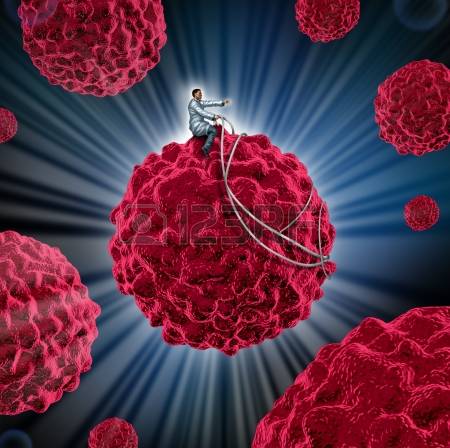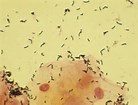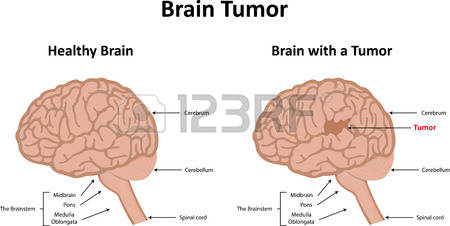







Men and women over sixty-five are more likely to die of heart disease than any other cause. Lower down the age-scale, women figure less than men-two men to one woman in the over fifties age-group and five men to one woman in the under fifties.Because men figure so prominently in the statistics, most research ahs been carried out on them - to the extent that a myth prevails that women don't suffer heart trouble.
Also, there is a shortage of information about women's symptoms. This is important because their symptoms are different to those of men. According to Dr Millicent Higgins of the Framingham Heart Disease Epidemiology Study, women's symptoms may be missed or misdiagnosed.
This can be catastrophic because although men are more suspectible to heart attacks, women are twice as likely to die as a result of them.
Women should be aware of pressure or pain in the chest. This may be intermittent over a period of time. Diabetics, who have trouble with their circulation anyway, are particularly at risk. Smokers aren't doing themselves any good, if you smother your potatoes in butter, I'll say goodbye now.
So, cut out all the fatty foods and eat less dairy produce. Use olive oil, which studies show to be beneficial to the heart. Eat more fresh fruit and vegetables - they will save your heart and keep you slim. Ensure periods of complete relaxation and aim for de-stressing - by taking a daily in the bath or a monthly trip to the masseur, whatever suits you so long as you get off the roundabout some time.
According to Professor Morris, chairman of the Fitness and Health Advisory Group to the Sports and Health Education Councils, a brisk walk for half an hour daily could reduce your heart disease risk by half. Perhaps you should walk to work. Plus, do ten minutes general exercise in the privacy of your home - there's no need to go into mega-routines and you will be more likely to persevere if you don't get too ambitious.
All circulation-stimulating essentials oils are good for the heart. Alternatively, try the formula enclosed. Rub over the entire front of your torso in a clockwise direction:
Preventative Heart Care Formula
Geranium 14 drop
Hyssop 4 drops
Rosemary 8 drops
Peppermint 4 drops
For the massage oil: if to be used weekly these amounts to 30mls of vegetable oil; or if to be used daily these amounts to 100mls of vegetable oil.
Make a synergistic blend using the above proportions and add 30 drops to your chosen bottle of base oil. Also, add 4 drops of the synergistic blend to your bath: and as you lie back, inhaling the delicious aroma, you'll agree that prevention is better than cure.
Reference: The fragrant Pharmacy/ Valerie Ann Wormwood









Radation Therapy
Cancer cells multiply faster than normal cells in the body. Because radiation is most harmful to quickly growing cells, radiation therapy damages cancer cells more than normal cells. This prevents the cancer cells from growing and dividing, and leads to cell death.
Radiation therapy is used to fight many types of cancer. Sometimes, radiation is the only treatment needed. It may also be used to:
⦁ Shrink a tumor as much as possible before surgery
⦁ Help prevent the cancer from coming back after surgery or chemotherapy
⦁ Relieve symptoms caused by a tumor
⦁ Treat cancers that cannot be removed with surgery
TYPES OF RADIATION THERAPY
External beam radiation is the most common form. This method carefully aims high-powered x-rays or particles directly at the tumor from outside of the body.
Internal beam radiation is placed inside of your body.
⦁ One method uses radioactive seeds that are placed directly into or near the tumor. This method is called brachytherapy, and is used to treat ⦁ prostate cancer. It is used less often to treat breast, cervical, lung, and other cancers.
⦁ Another method involves receiving radiation by drinking it, swallowing a pill, or through an IV. Liquid radiation travels throughout your body, seeking out and killing cancer cells. Thyroid cancer may be treated this way.
SIDE EFFECTS OF RADIATION THERAPY
Radiation therapy can also damage or kill healthy cells. The death of healthy cells can lead to side effects.
These side effects depend on the dose of radiation, and how often you have the therapy. External beam radiation may cause skin changes, such as hair loss, red or burning skin, thinning of skin tissue, or even shedding of the outer layer of skin.
Other side effects depend on the part of body receiving radiation:
Other side effects depend on the part of body receiving radiation:
Breast radiation - discharge
When you have radiation treatment for cancer, your body goes through some changes.
2 weeks after your first treatment:
⦁ It may be hard to swallow, or swallowing may hurt.
⦁ Your throat may feel dry or scratchy.
⦁ You may develop a cough.
⦁ Your skin over the treated area may turn red, start to peel, or get dark, or it may itch.
Most of these changes should go away around 4 to 6 weeks after the radiation treatment is over.
You may notice changes in the way your breast looks or feels (if you are getting radiation after a lumpectomy). These changes include:
⦁ Soreness or swelling in the area being treated. This should go away around 4 to 6 weeks after treatment is over.
⦁ The skin on your breast may become more sensitive or numb.
⦁ Skin and breast tissue may be thicker or firmer. The skin may be slightly darker.
⦁ After therapy, your breast may feel larger or smaller. Many women will not have any change in size.
⦁ You may notice these changes for up to 12 months after therapy starts.
Skin Care
When you have radiation treatment, a health care provider draws colored markings on your skin. DO NOT remove these markings. These show where to aim the radiation. If they come off, DO NOT redraw them. Tell your doctor if they come off. These must stay there until your treatments are done.
Take care of the treatment area:
⦁ Wash gently with lukewarm water only. DO NOT scrub. Pat your skin dry.
⦁ DO NOT use soaps.
⦁ Do not use lotions, ointments, makeup, perfumed powders, or other perfumed products on this area. Ask your doctor what is ok to use.
⦁ Keep the area that is being treated out of the direct sun.
⦁ DO NOT scratch or rub your skin.
Tell your provider if you have any break or opening in your skin. DO NOT put heating pads or ice bags on the treatment area. Wear loose-fitting clothing.
DO NOT wear a bra, or wear a loose-fitting bra with no underwire. Ask your doctor about wearing your breast prosthesis, if you have one.
Self-care
You need to eat enough protein and calories to keep your weight up while you are having radiation.
Tips to make eating easier:
⦁ Choose foods that you like.
⦁ Serve foods with gravy, broths, or sauces to make them easier to chew and swallow.
⦁ Eat small meals, and eat more often during the day.
⦁ Cut your food into small pieces.
⦁ Ask your doctor or dentist if artificial saliva might help you.
Ask your doctor about liquid food supplements. These can help you get enough calories. If pills are hard to swallow, try crushing them and mixing them with some ice cream or another soft food.
Watch out for these signs of swelling (edema) in your arm.
⦁ You have a feeling of tightness in your arm.
⦁ Rings on your fingers get tighter.
⦁ Your arm feels weak.
⦁ You have pain, aching, or heaviness in your arm.
⦁ Your arm is red, swollen, or there are signs of infection.
Ask your provider about exercises you can do to keep your arm moving freely.
Most people who get radiation treatment begin to feel tired after a few days. If you feel tired:
⦁ DO NOT try to do too much in a day. You will probably not be able to do everything you are used to doing.
⦁ Try to get more sleep at night. Rest during the day when you can.
⦁ Take a few weeks off work, or work less.
Alternate Names
Radiation - breast - discharge
References
Freedman GM. Radiation complications and their management. In: Bland KI, Copeland EM. The Breast: Comprehensive Management of Benign and Malignant Diseases. 4th ed. Philadelphia, PA: Elsevier Saunders; 2009:chap 67.
Zemen EM, Schreiber EC, Tepper JE. Basics of radiation therapy. In: Niederhuber JE, Armitage JO, Doroshow JH, et al., eds. Abeloff's Clinical Oncology. 5th ed. Philadelphia, PA: Elsevier Churchill Livingstone; 2013:chap 27.







Non -specific Vaginitis
| Formula | Dilute | Method Options | |
| Lavender 2 drops | 1 dessertspoon glycerin, then 600mls water |
Sitz bath daily Massage daily Douche 3 days a week only |
|
| Cypress 1 drop | |||
| Hyssop 1 drop |
Reference: Fragrant Pharmacy/ V A Worwood





Brain Radiation- Discharge
Two weeks after radiation treatment starts, you might notice changes in your skin. Most of these symptoms go away after your treatments have stopped.
⦁ Your skin and mouth may turn red.
⦁ Your skin might start to peel or get dark.
⦁ Your skin may itch.
Your hair will begin to fall out about 2 weeks after radiation treatment starts. It may not grow back.
Hair and Skin Care
When you have radiation treatment, color markings are drawn on your skin. DO NOT remove them. These show where to aim the radiation. If they come off, DO NOT redraw them. Tell your doctor instead.
To care for your hair:
⦁ For the first 2 weeks of treatment, wash your hair once a week with a gentle shampoo, such as a baby shampoo.
⦁ After 2 weeks, use only warm water on your hair and scalp, without shampoo.
⦁ Dry gently with a towel.
⦁ DO NOT use a hair dryer.
If you wear a wig or toupee:
⦁ Be sure the lining does not bother your scalp.
⦁ Wear it only a few hours a day, during the time you are getting radiation treatments and right after treatment has ended.
⦁ Ask your doctor when you can start to wear it more.
To care for your skin in the treatment area:
⦁ Wash the treatment area gently with lukewarm water only. DO NOT scrub your skin.
⦁ DO NOT use soaps.
⦁ Pat dry instead of rubbing dry.
⦁ DO NOT use lotions, ointments, makeup, perfumed powders, or other perfumed products on this area. Ask your health care provider what is OK to use.
⦁ Keep the area being treated out of direct sunlight. Wear a hat or scarf. Ask your provider if you should use sunscreen.
⦁ DO NOT scratch or rub your skin.
⦁ Ask your doctor for medicine if your scalp gets very dry and flaky, or if it gets red or tanned.
⦁ Tell your provider if you have any breaks or openings in your skin.
⦁ DO NOT put heating pads or ice bags on the treatment area.
Keep the treatment area in the open air as much as possible. But stay away from very hot or cold temperatures.
DO NOT swim during treatment. Ask your provider when you can start swimming after treatment.
Other Self-care
You need to eat enough protein and calories to keep your weight and strength up. Ask your provider about liquid food supplements that may help you get enough calories.
Avoid sugary snacks and drinks that may cause tooth decay.
You will likely feel tired after a few days. If so:
⦁ DO NOT try to do too much. You probably will not be able to do everything you are used to.
⦁ Get more sleep at night. Rest during the day when you can.
⦁ Take a few weeks off work, or work less.
You may be taking a medicine called dexamethasone (Decadron) while you are getting radiation to the brain.
⦁ It may make you hungrier, cause leg swelling or cramps, cause problems sleeping (insomnia), or cause changes in your mood.
⦁ These side effects will go away after you start taking less of the medicine, or when you stop taking it.
Follow-up Care
Your doctor may check your blood counts regularly.
Alternative Names
Radiation - brain - discharge; Cancer-brain radiation; Lymphoma - brain radiation; Leukemia - brain radiation
References
Doroshow JH. Approach to the patient with cancer. In: Goldman L, Schafer AI, eds. Goldman's Cecil Medicine. 25th ed. Philadelphia, PA: Elsevier Saunders; 2016:chap 179.
National Cancer Institute. Radiation therapy and you: Support for people with cancer. Updated May 2007. www.cancer.gov/publications/patient-education/radiationttherapy.pdf. Accessed March 17, 2016.
- Home
- Vaginal infections and inflammation
- Threat to the Forests
- The Vinegar treatment for Thrush
- Treating Acid Environments
- Your Basic Travel Kit - Tummy Troubles
- Pamela L. Crowell on the Prevention and Therapy of Cancer by Dietary Monoterpenes
- Thrush (Candida) Case History
- Problems In Pregnancy
- The Work of Anne-Marie Giraud-Robert
- Thrush treatment for Men- Women
- Applications For Your Basic Care Kit - 4
- Fragrant Pharmacy
- Bites and Stings - General Action - Your Basic Travel Kit
- Whooping Cough
- Lymphoedema
- The journey
- Your Basic Travel Kit - Fevers
- Applications For Your Basic Care Kit - 3
- Your Basic Travel Kit - The Heat
- Aromatherapy-Cramps
- Aromatherapy-Articles-A-Z
- Verrucas and Warts
- Rabid Bites and Scratches - Your Basic Travel Kit
- Your Basic Travel Kit
- Wrinkles and Ageing Skin - Facial Scrubs
- Wrinkles and Ageing Skin - Cleansers
- Wrinkles and the Ageing Skin
- Fragrant way to Beauty - 2
- The Fragrant way to Beauty
- A-Z of Dance and Sports Injuries - 7
- A-Z of Dance and Sports Injuries - 6
- A-Z of Dance and Sports Injuries - 5
- A-Z of Sports and Dance Injuries - 4
- A-Z of Sports and Dance Injuries-3
- A-Z of Sports and Dance Injuries-2
- A-Z of Sports and Dance Injuries
- Aromatherapy - Locker Room Scents
- Aromatherapy- Stress & Sports - Jacuzzis
- Aromatherapy-stress & Sport - Saunas
- Aromatherapy - stress & Sport - Showers
- Stress and Sport - Aromatherapy
- Foot Care - 2 - Aromatherapy
- Foot Care - Aromatherapy
- MUSCLES-Aromatherapy
We have 5 guests and no members online
